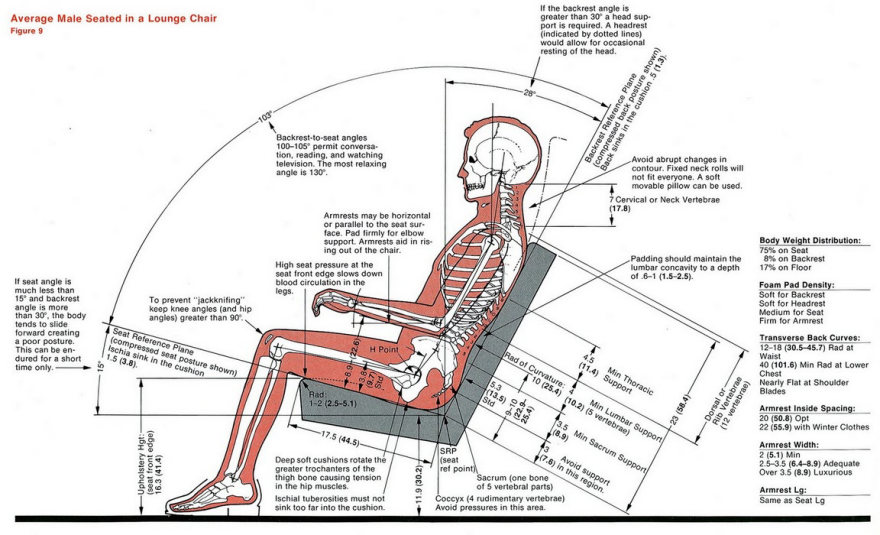Measuring and Adjusting Chair Back Angles: Comfortable Angle For Chair Back

Finding the perfect chair back angle is essential for achieving optimal comfort and supporting your posture. This involves understanding your body’s needs and how to adjust your chair to meet them.
Measuring Chair Back Angles
The chair back angle is crucial for supporting your spine and maintaining a healthy posture. To find the optimal angle, you need to consider your individual body type and the tasks you perform while sitting.
- Measure Your Lumbar Curve: Stand upright and place a piece of paper between your lower back and a wall. The angle formed between the wall and the paper represents your lumbar curve. This measurement can guide you in choosing a chair with a similar angle for proper support.
- Consider the Task: The ideal chair back angle can vary depending on the task. For example, a more upright angle might be suitable for focused work, while a more reclined angle might be better for relaxation or reading.
Adjusting Chair Back Angles
Many modern chairs feature adjustable mechanisms that allow you to customize the back angle. Understanding these mechanisms is key to achieving optimal comfort.
- Tilt Mechanisms: These allow you to adjust the chair back’s angle from upright to reclined positions. They are often accompanied by a tension control knob, allowing you to fine-tune the resistance of the tilt.
- Lumbar Support: Some chairs offer adjustable lumbar support, which provides additional support to the lower back. This can be especially beneficial for people with lower back pain.
- Armrests: Adjustable armrests can help to ensure proper posture and reduce strain on your shoulders and neck.
Regular Adjustments and Dynamic Seating, Comfortable angle for chair back
Regular adjustments are essential for maintaining optimal comfort throughout the day. As your posture changes and your body shifts position, the chair’s angle should be adjusted accordingly.
- Dynamic Seating: This approach encourages frequent movement and posture changes. Dynamic chairs often feature adjustable mechanisms that allow for easy adjustments, promoting a more active sitting experience. This can help to reduce muscle fatigue and improve circulation.
Chair Back Angles and Activities
The following table showcases different chair back angles and their associated activities or tasks:
| Chair Back Angle | Activity/Task |
|---|---|
| 90-100 degrees | Focused work, writing, typing |
| 100-110 degrees | Relaxation, reading, casual browsing |
| 110-120 degrees | Napping, watching TV, reclining |
Comfortable angle for chair back – Finding the right angle for your chair back is crucial for posture and comfort. However, if your chair leans back too much, it can disrupt your workflow and cause back pain. If you’re struggling with a chair that leans back too far, check out this guide on how to make office chair not lean back to regain control and find the perfect angle for your chair.
Once you’ve adjusted your chair, you can focus on maintaining a healthy posture and enjoying the benefits of a well-supported back.
Finding the right angle for your chair back is crucial for maintaining good posture and avoiding discomfort. The Winsley Mid Back Chair White, available here , is designed with a comfortable backrest angle that provides optimal support. A well-angled chair back encourages proper spinal alignment and can help reduce back pain, allowing you to work or relax in comfort for extended periods.